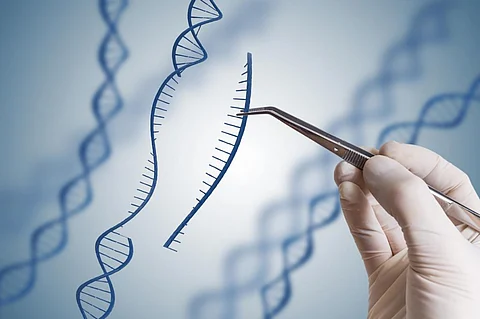

A Chinese scientist stirred up a hornet’s nest by announcing the birth of gene-edited twins in 2018. A new study warns of the consequences of deploying a technology that is still less understood.
Deleting harmful disease-causing mutations by gene editing could be counterproductive. It could create more problems than it solves, the study published in the journal Nature Communications highlighted.
“It tells you how little we know about editing the genome, and particularly how cells respond to the DNA damage that Clustered Regularly Interspaced Short Palindromic Repeats (CRISPR, a gene editing technology) induces,” Shoukhrat Mitalipov, director of the Oregon Health & Science University Center for Embryonic Cell and Gene Therapy, said in a statement.
CRISPR can target and edit DNA at precise locations. The Chinese scientist used CRISPR to make the embryos resistant to the human immunodeficiency virus.
Many scientists condemned him, especially since gene editing is still experimental. It could also increase the risk of other diseases.
Gene editing can be divided into two classes. One involves changing genes in human cells. This method does not alter reproductive cells, such as sperms or eggs. It can be used to treat diseases caused by mutations.
The second method alters the genome of human embryos. These altered genes can be passed on to future descendants, raising ethical concerns. The Chinese scientist used the latter in his experiment on the twins.
“Gene repair has great potential, but these new results show that we have a lot of work to do,” Mitalipov said.
The researchers stress that such limitations must be addressed before using this gene editing technology.
Mitalipov and his colleagues studied a set of diseases induced by mutations, including the one that causes cardiomyopathy, a condition in which the heart muscle becomes abnormally thick.
They used donated sperm and eggs for the study. With CRISPR technology, the team induced a break in the DNA at the mutation site to add or delete pieces of the genetic material. This disables the disease-causing gene.
The break sites are repaired by human embryos. They do so by copying genetic information from the normal copy of the gene onto the altered strand of the DNA.
But CRISPR could lead to extensive gene copying from one parent to the other, the new study showed. This is a concern, it added.
Humans possess two versions of a particular gene received from each parent. If a child gets a recessive disease-causing gene from one parent and a dominant healthy version of the same gene from the other, they could still be protected.
The extensive copying of genetic information from one parent to another due to CRISPR could give rise to two mutant copies of the disease-causing gene in the embryo. This significantly increased the risk of diseases, the researchers explained.
“If you’re cutting in the middle of a chromosome, there could be 2,000 genes there,” Mitalipov said. “You’re fixing one tiny spot, but all these thousands of genes upstream and downstream may be affected,” he added.
The gene-edited embryo should be tested before it is transferred into the uterus. Scientists do this by collecting a small sample from a few or even a single cell. It is then multiplied millions of times using whole genome amplification.
Whole genome amplification is a technology that helps increase the amount of DNA samples.
This technology can reduce the accuracy of genetic testing, the researchers said. “The concern is that we might be misdiagnosing embryos,” Paula Amato, professor of obstetrics and gynaecology at the OHSU School of Medicine, said.
The researchers proposed an alternative method that uses stem cells from gene-edited embryos. Stem cells can develop into any functional cells, such as skin cells, muscle cells, liver cells or brain cells.
As these stem cells grow indefinitely, they can provide ample DNA material for testing.